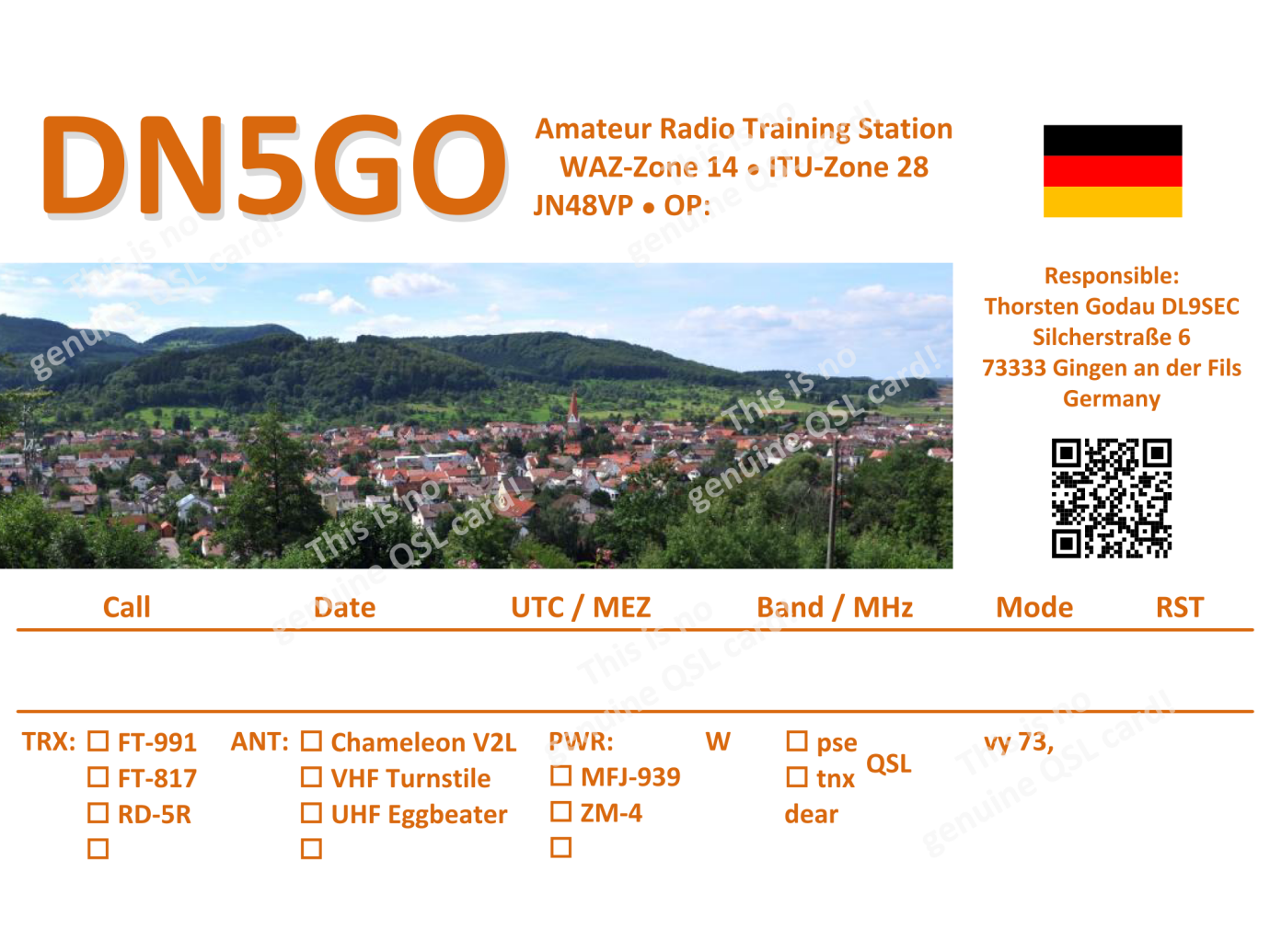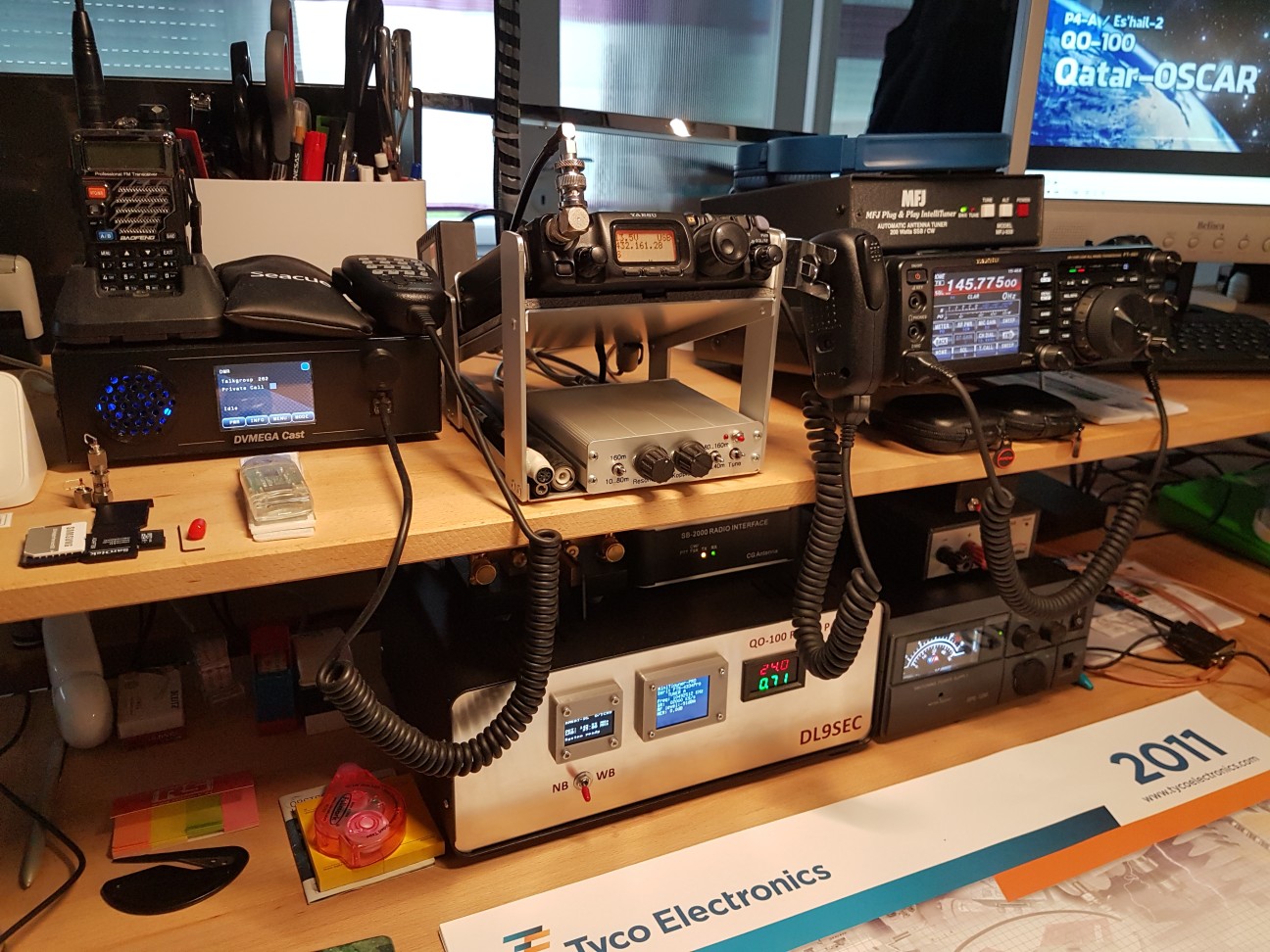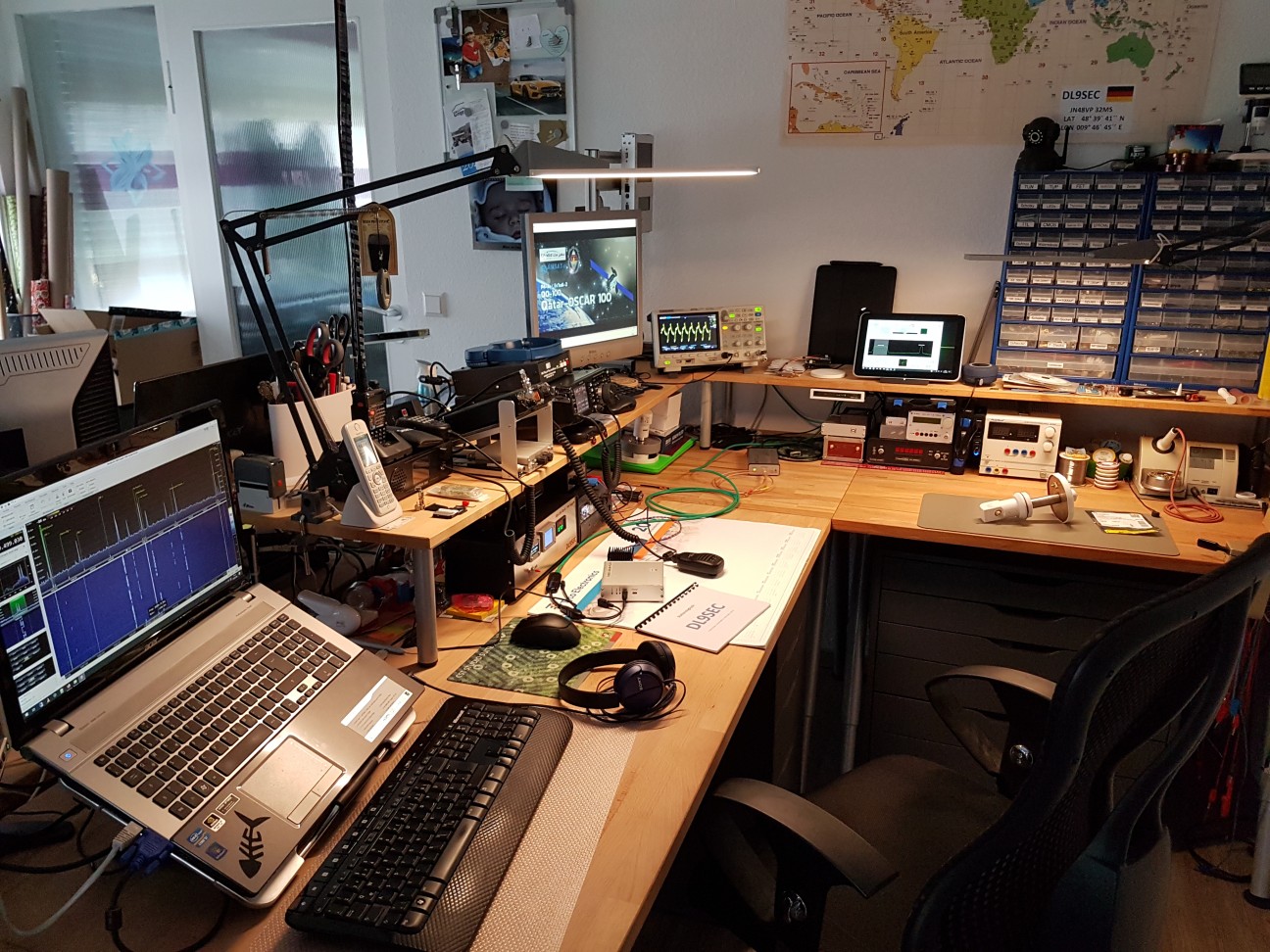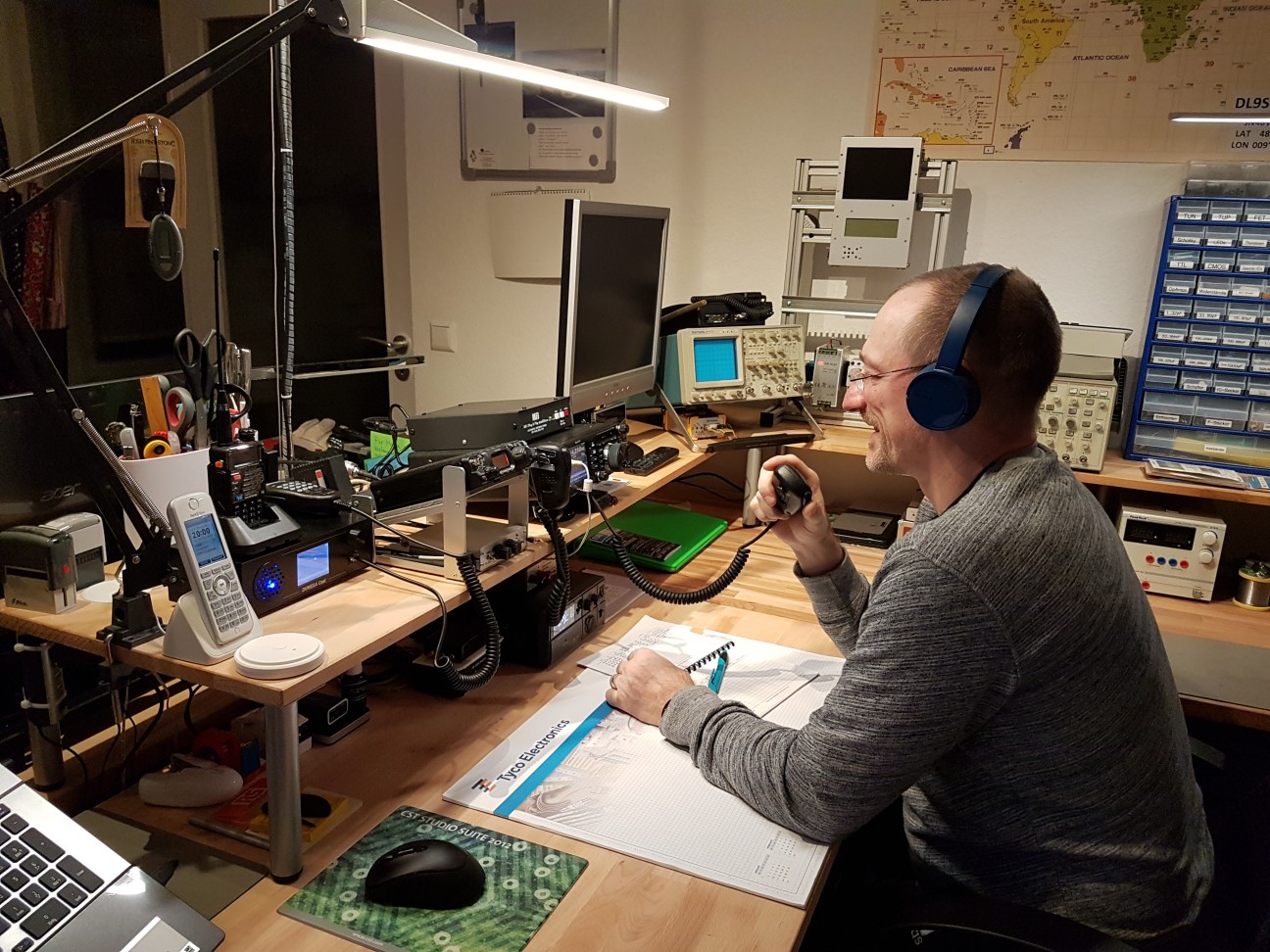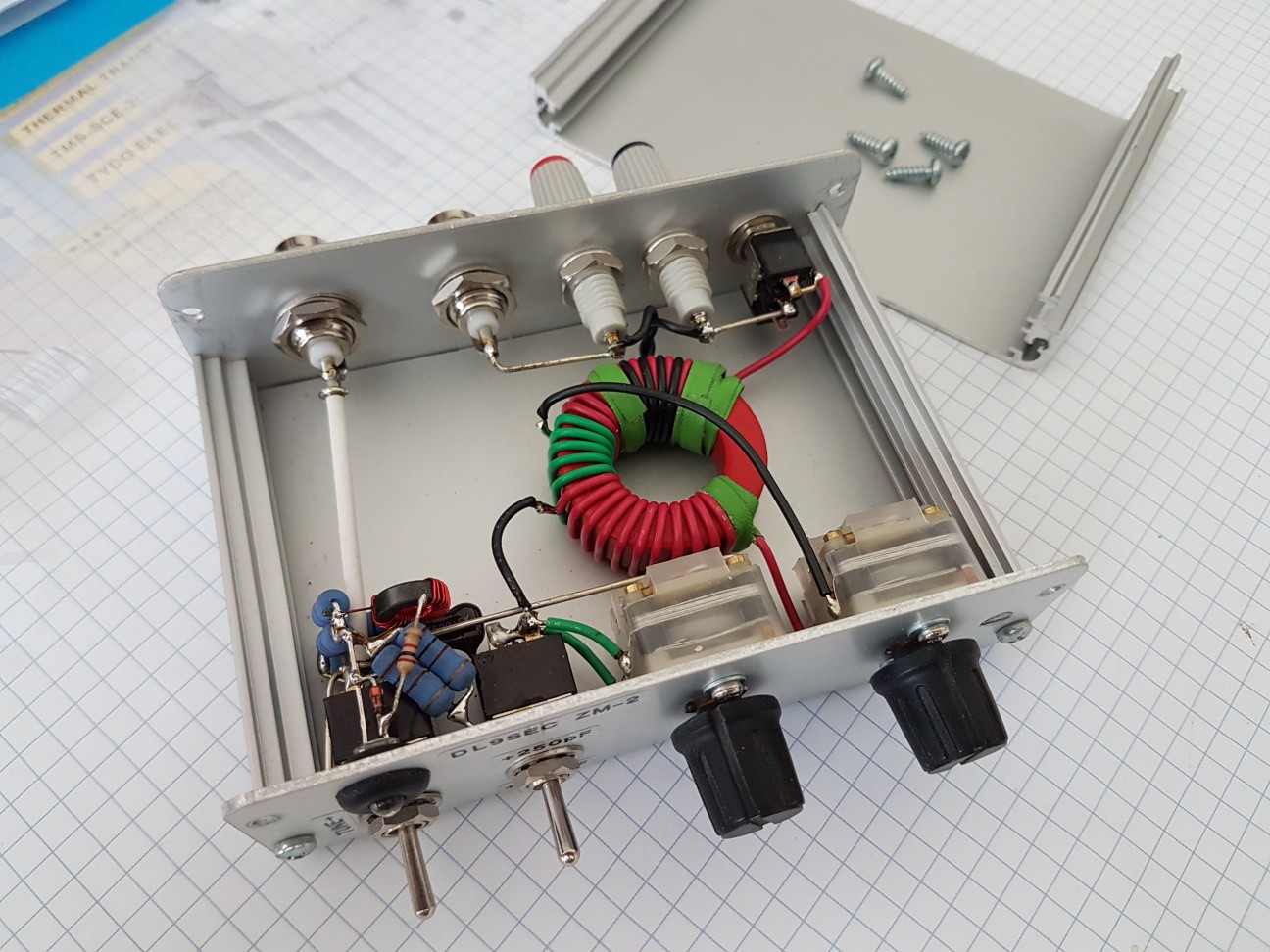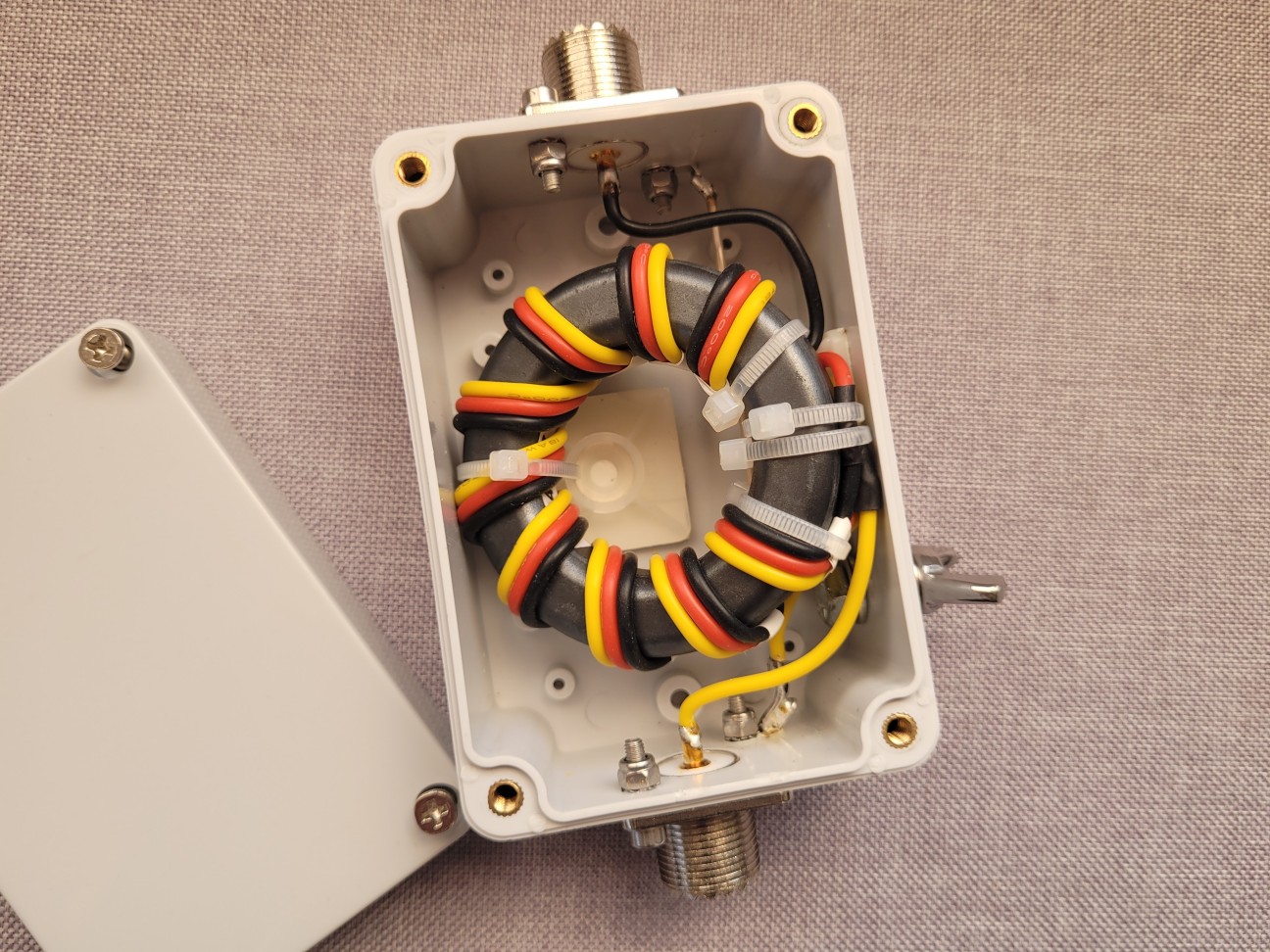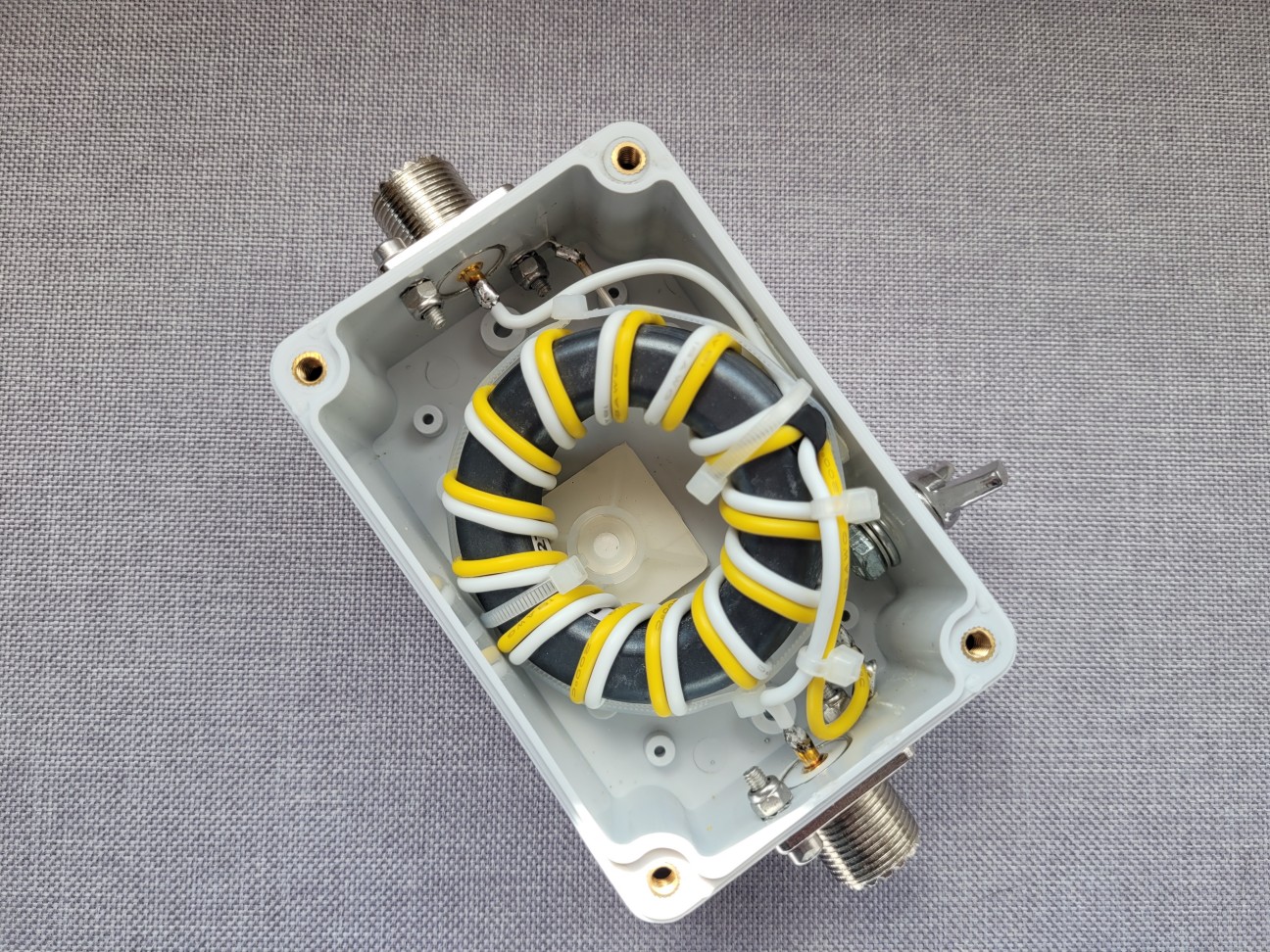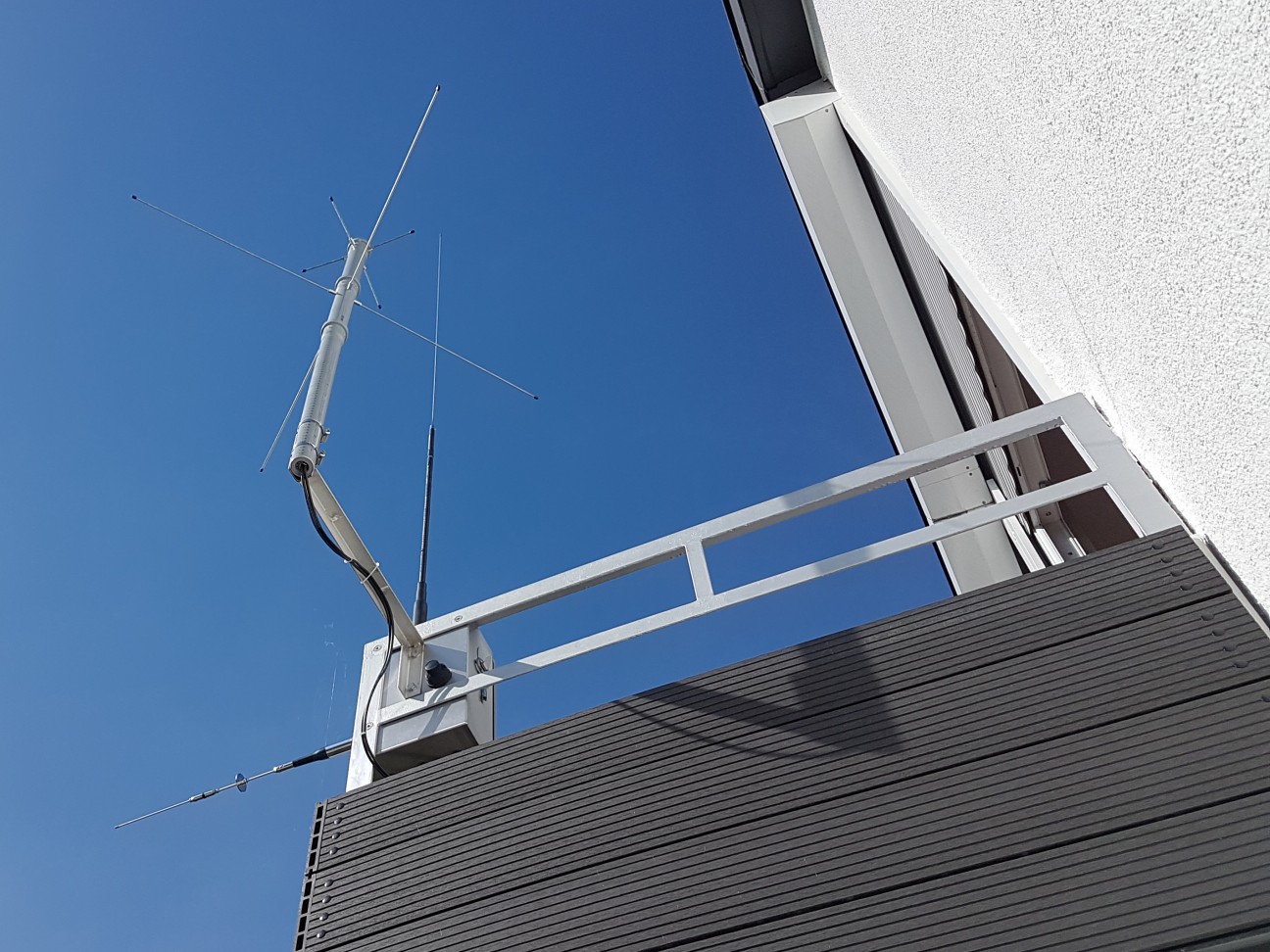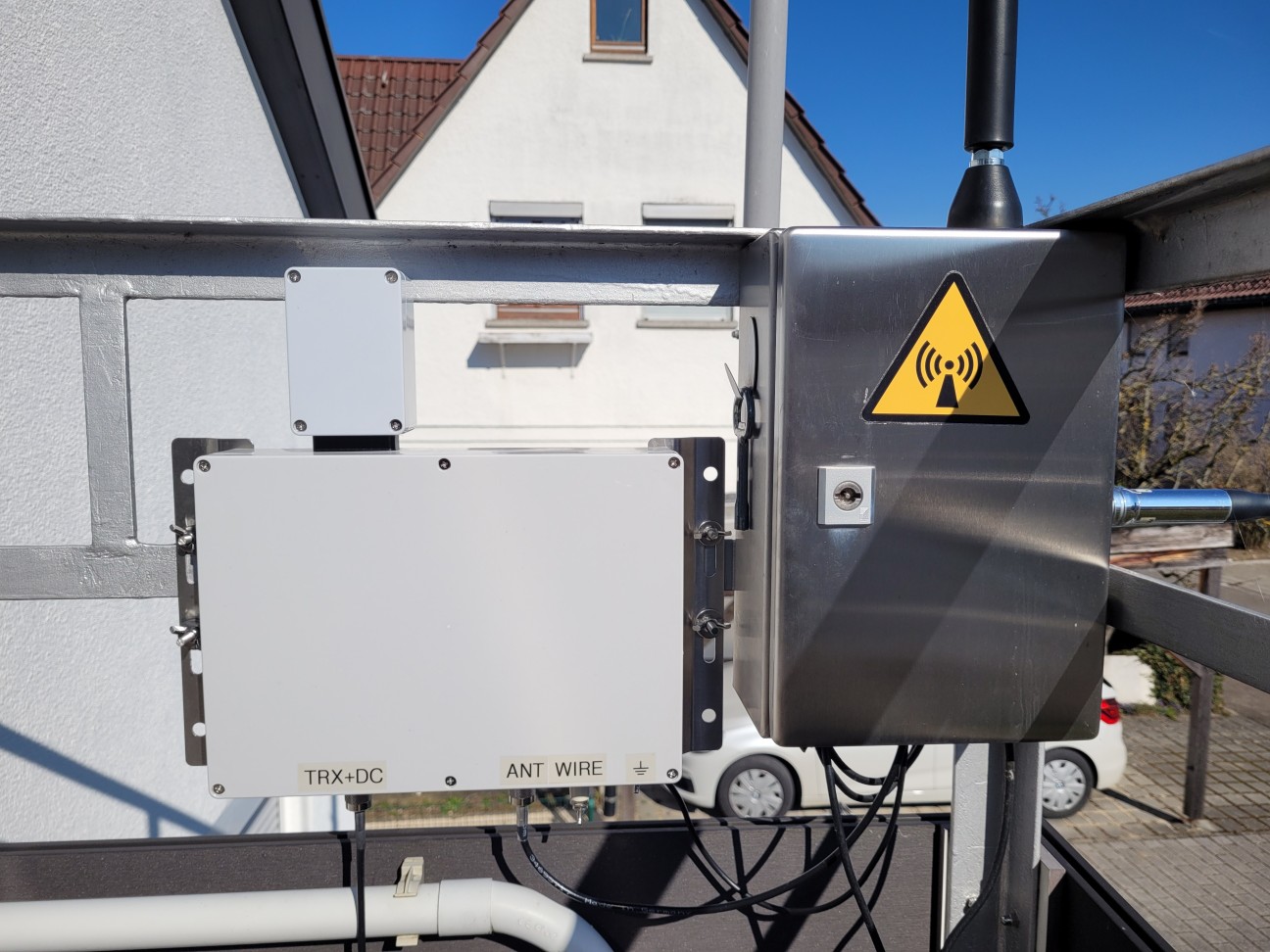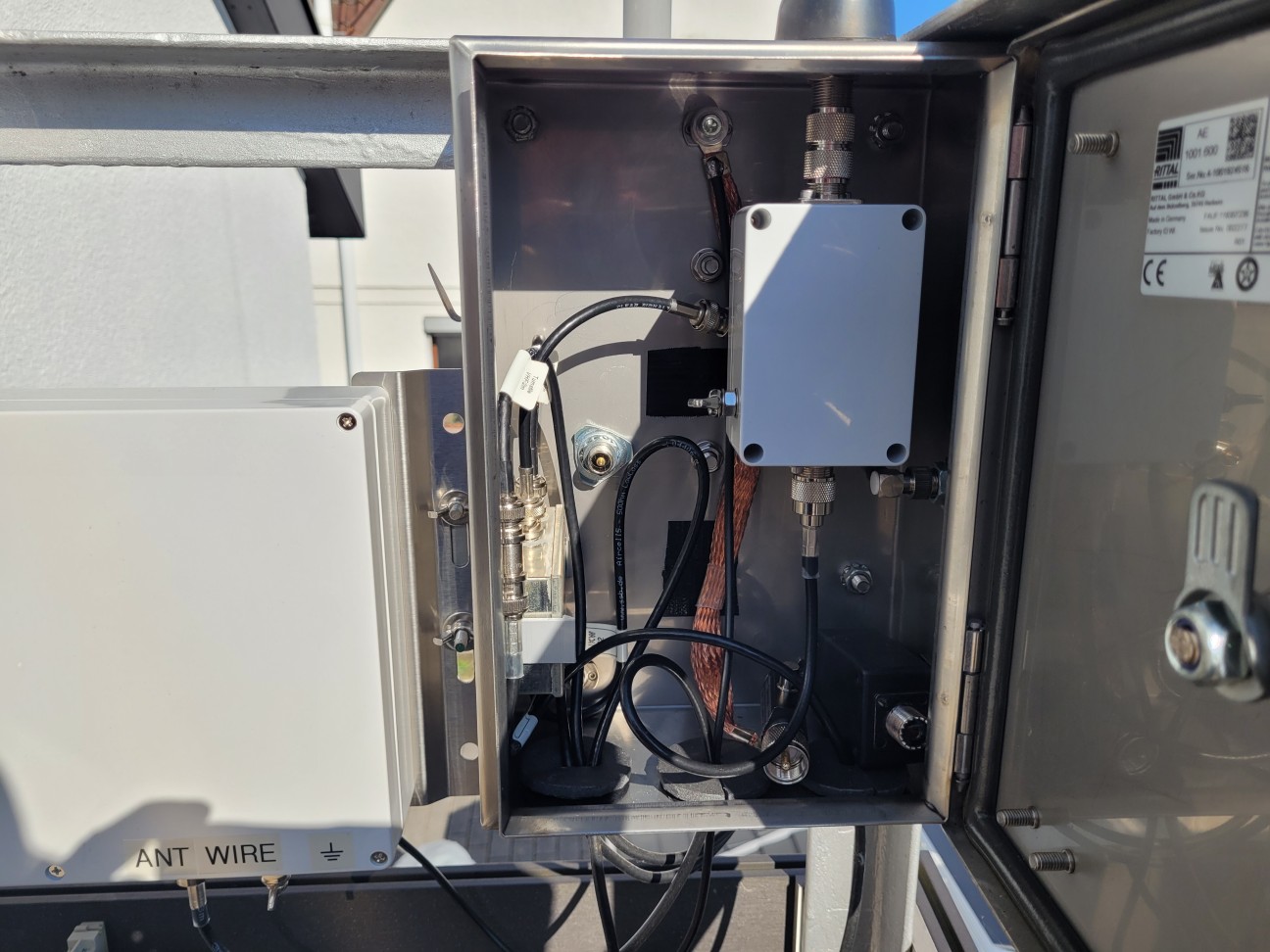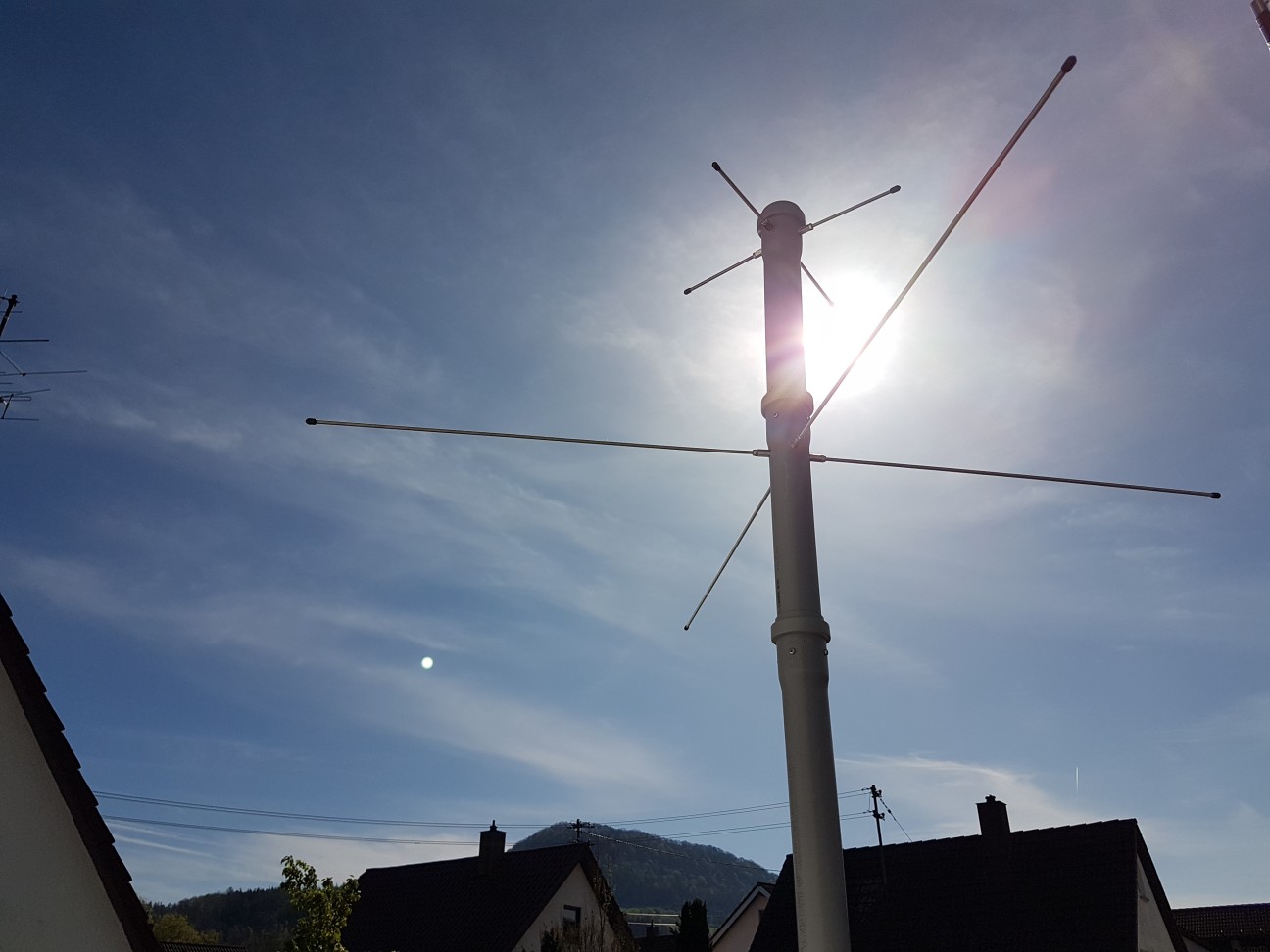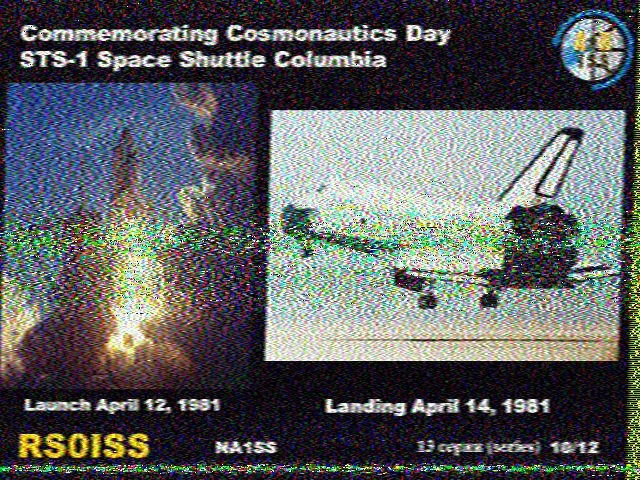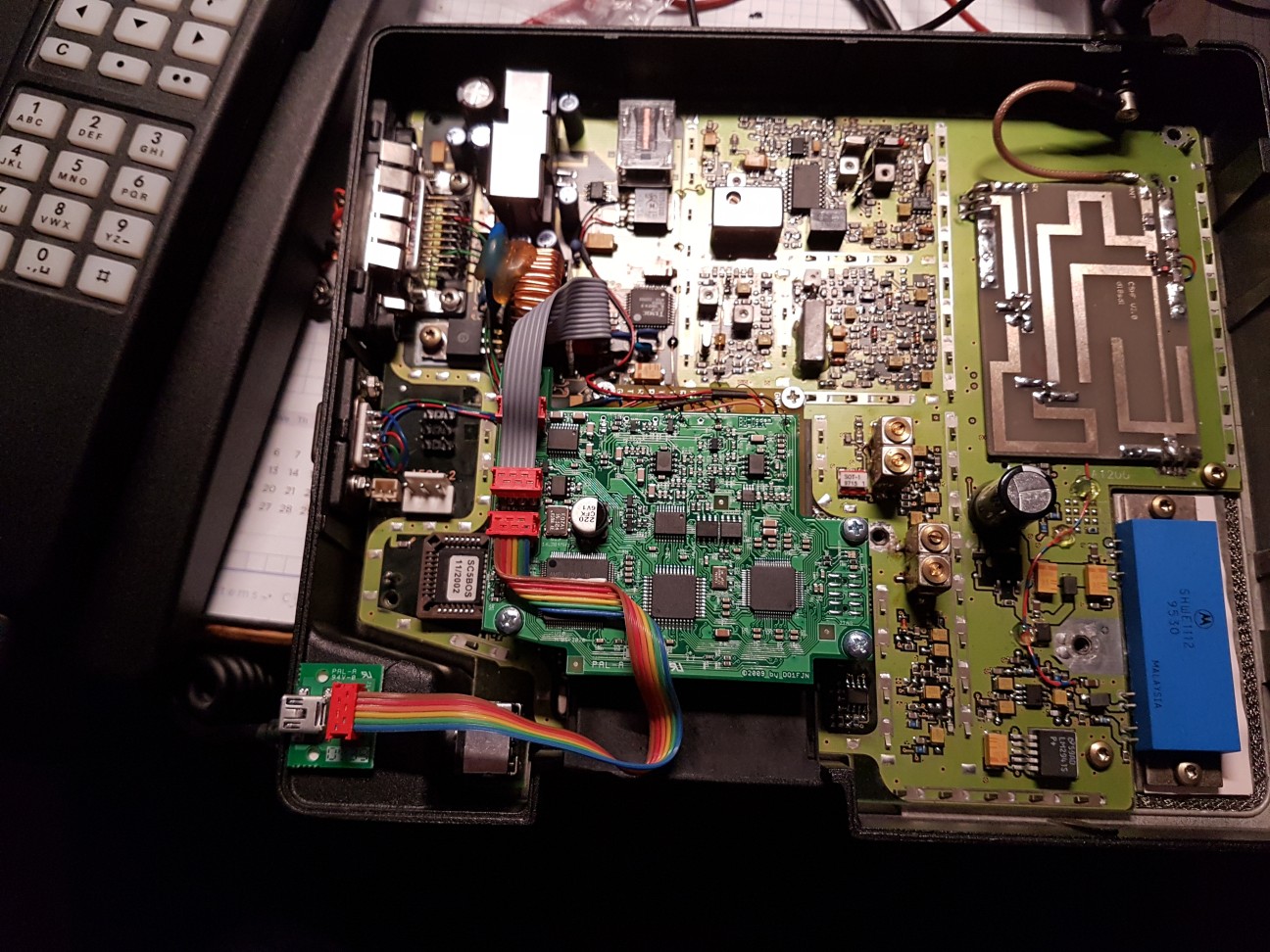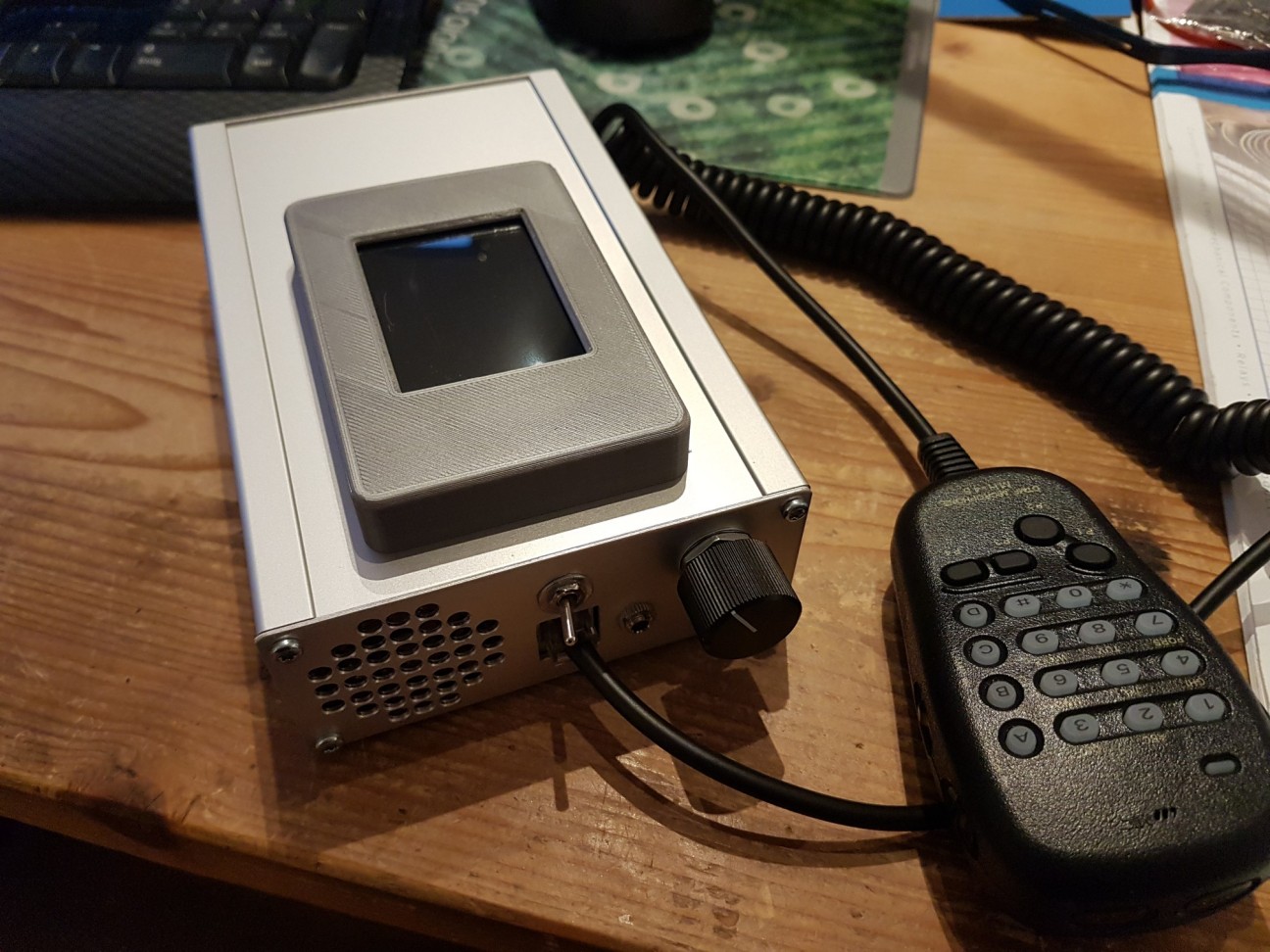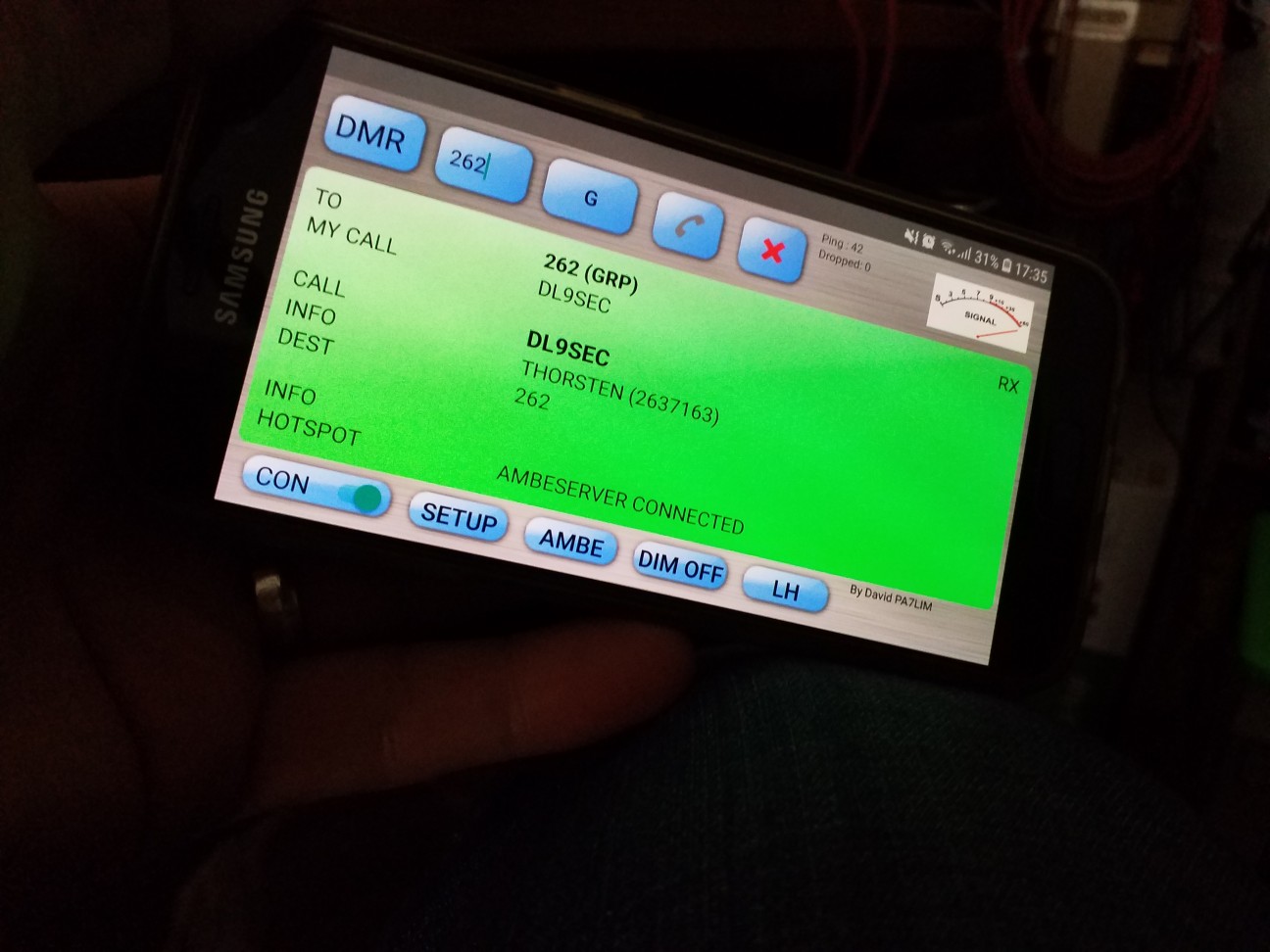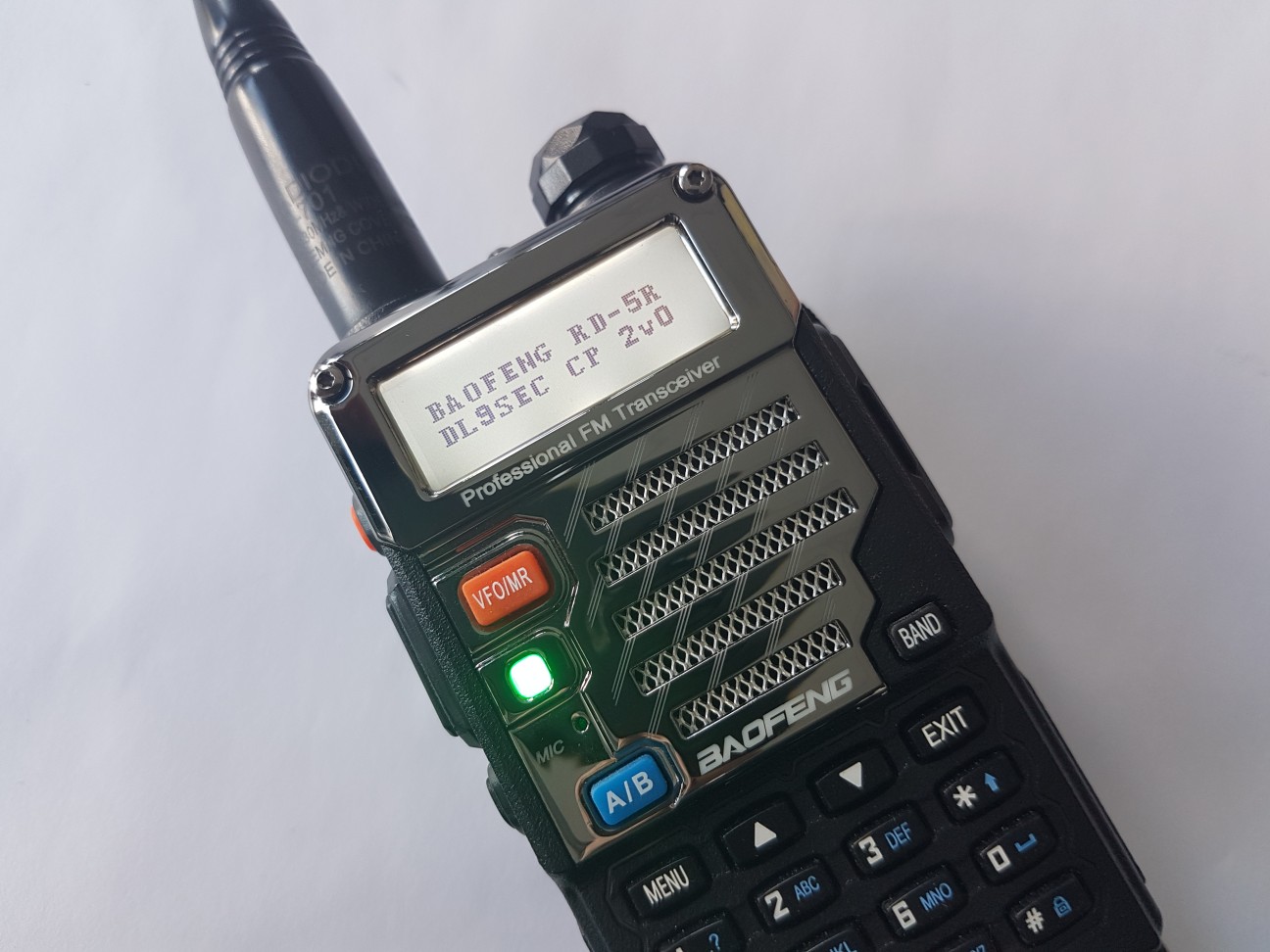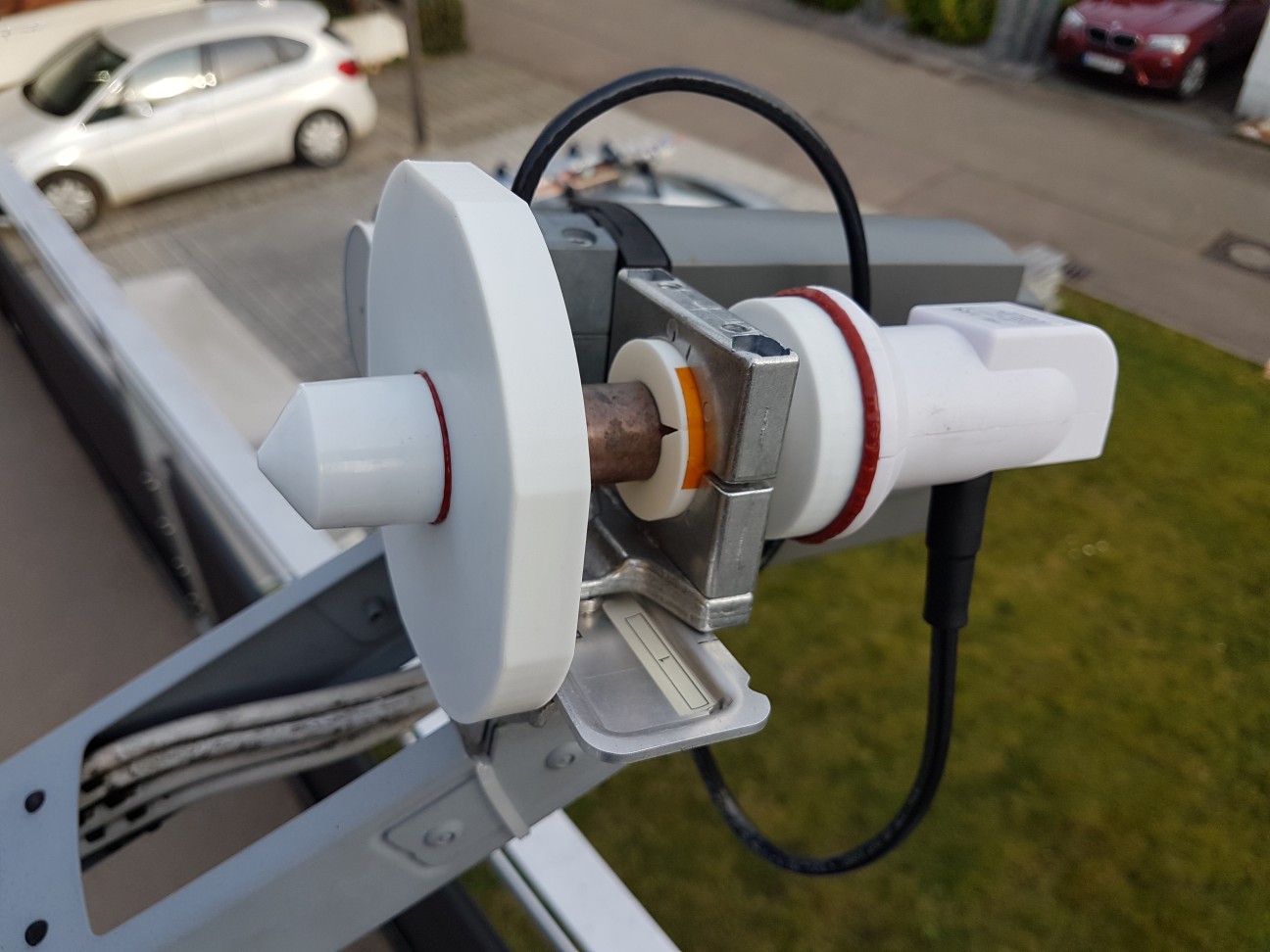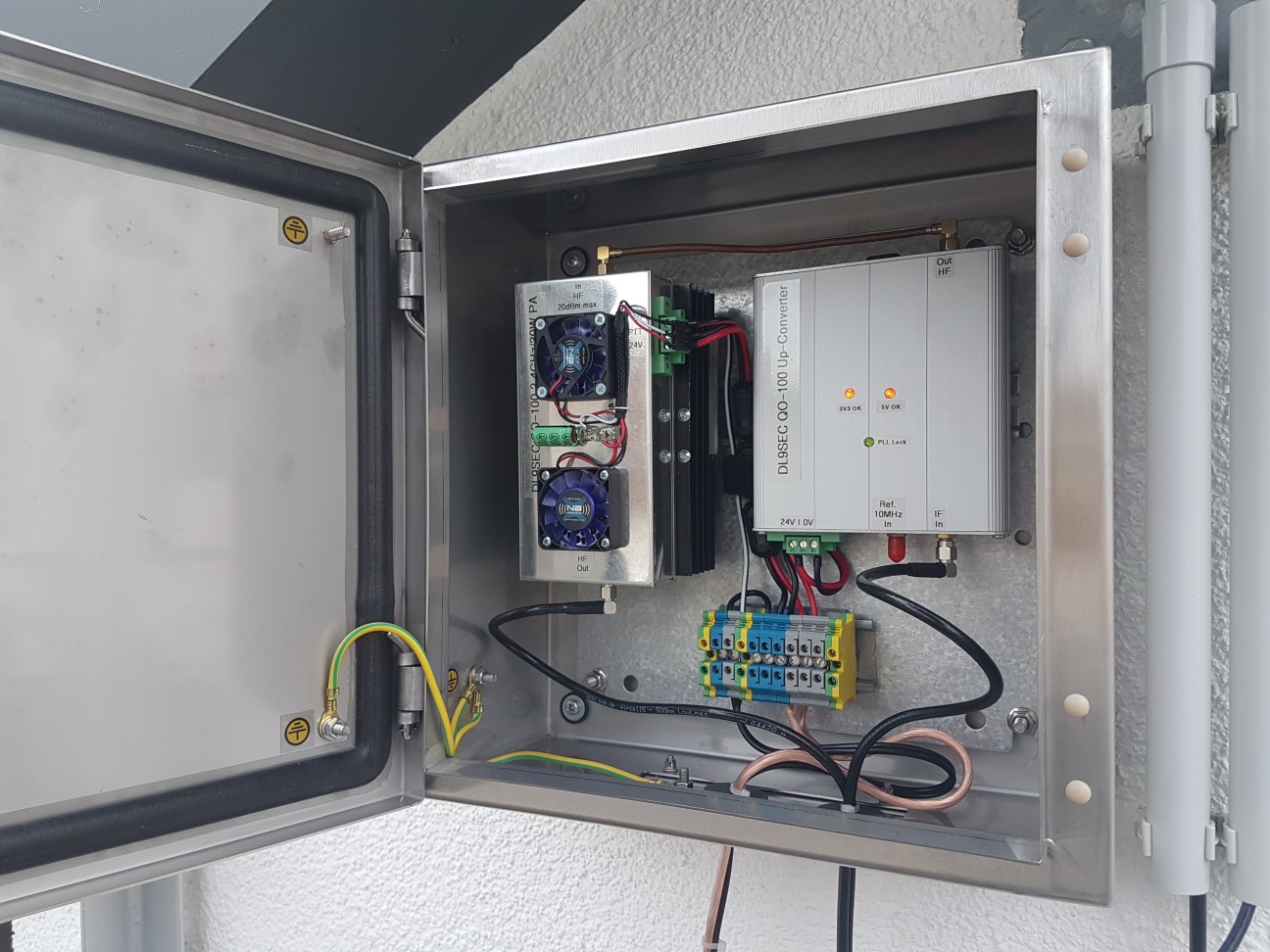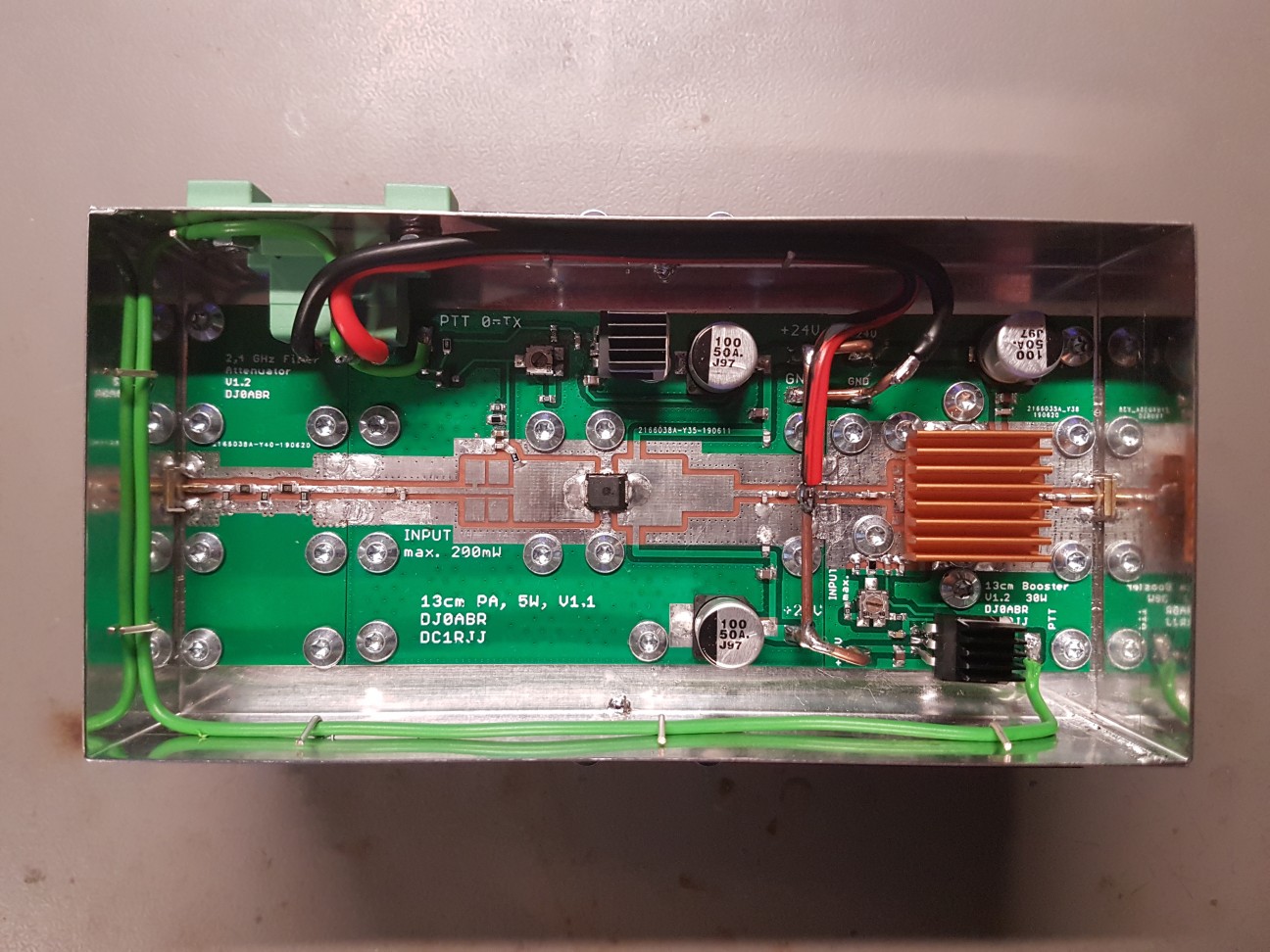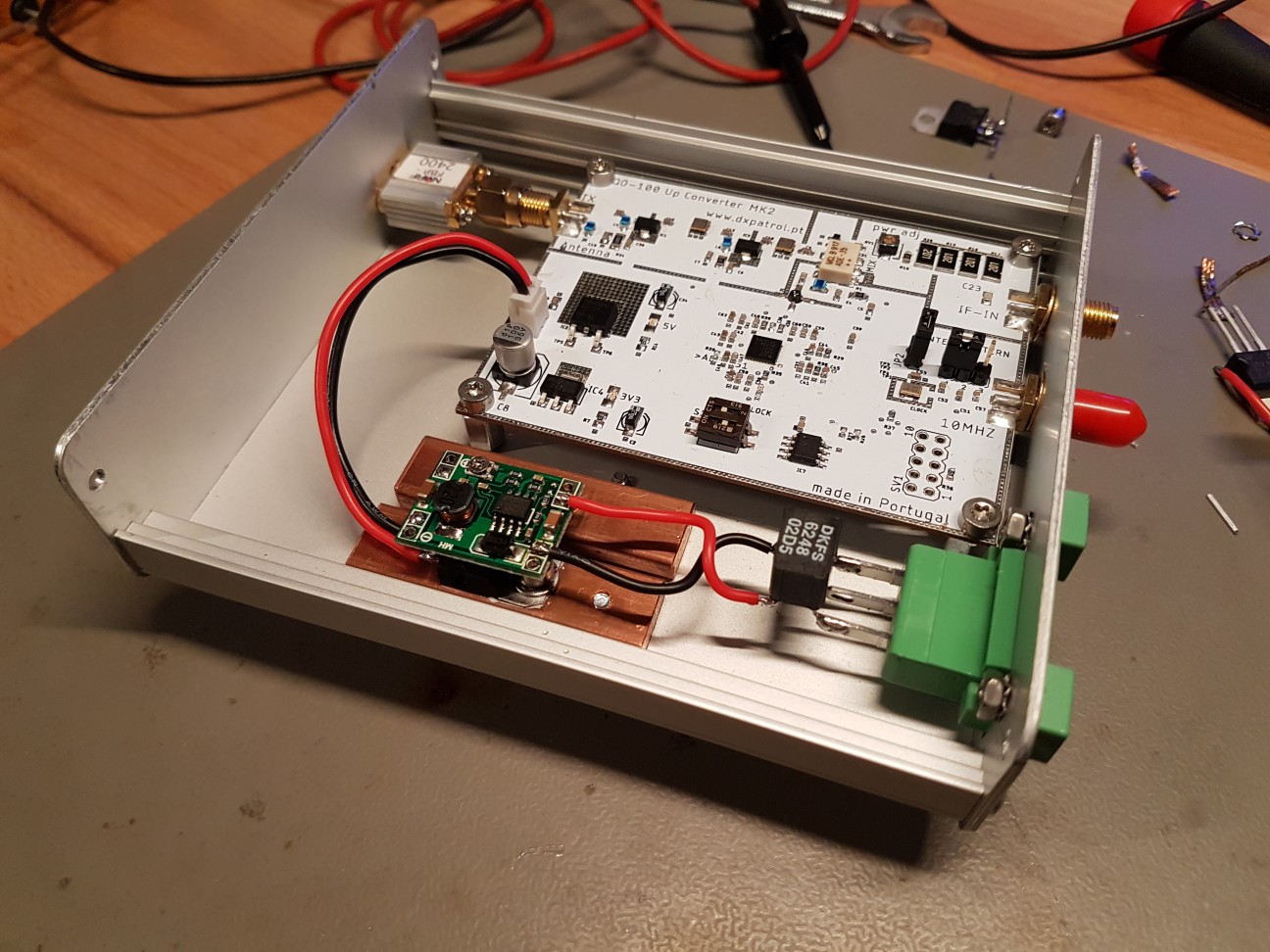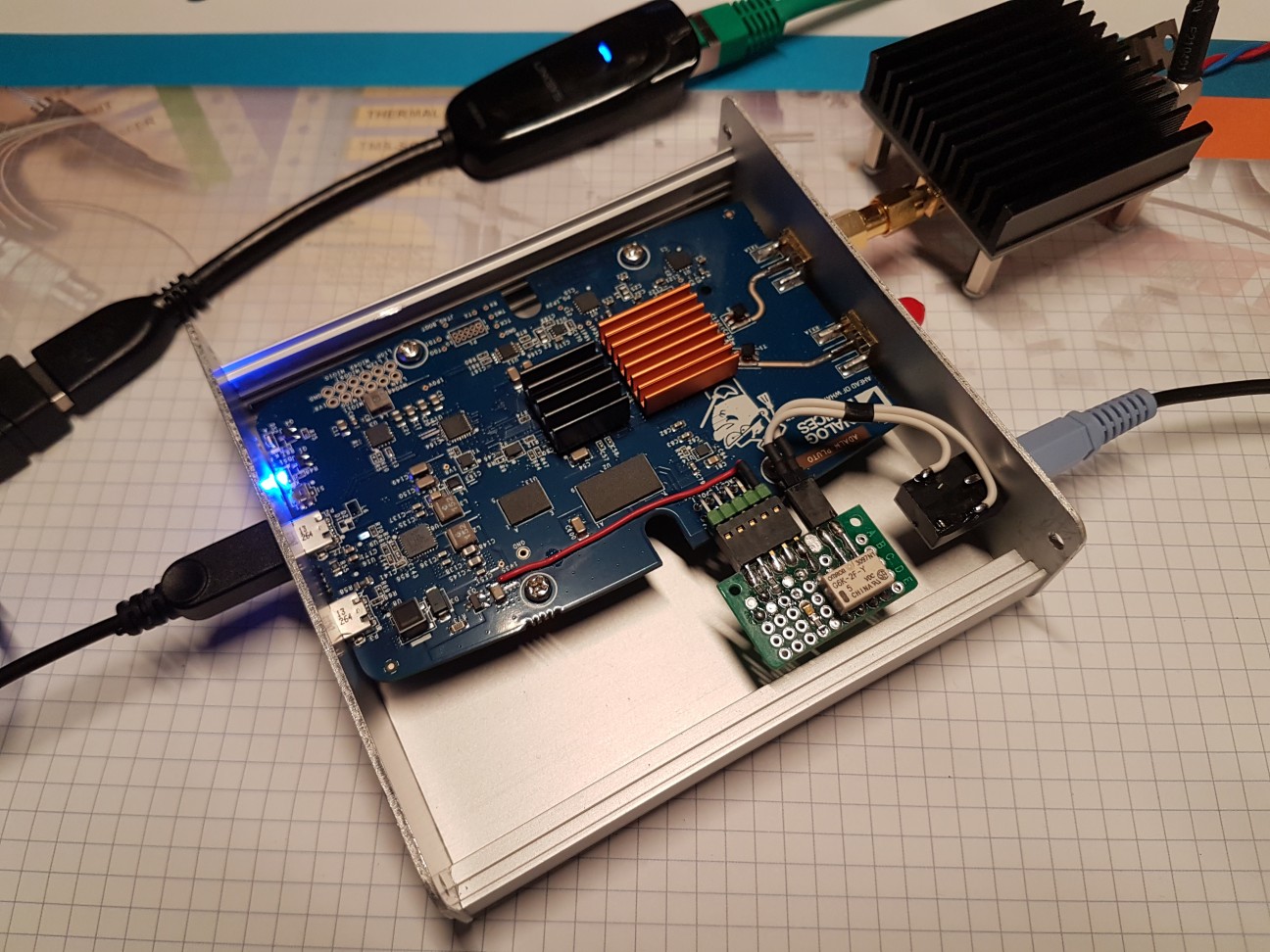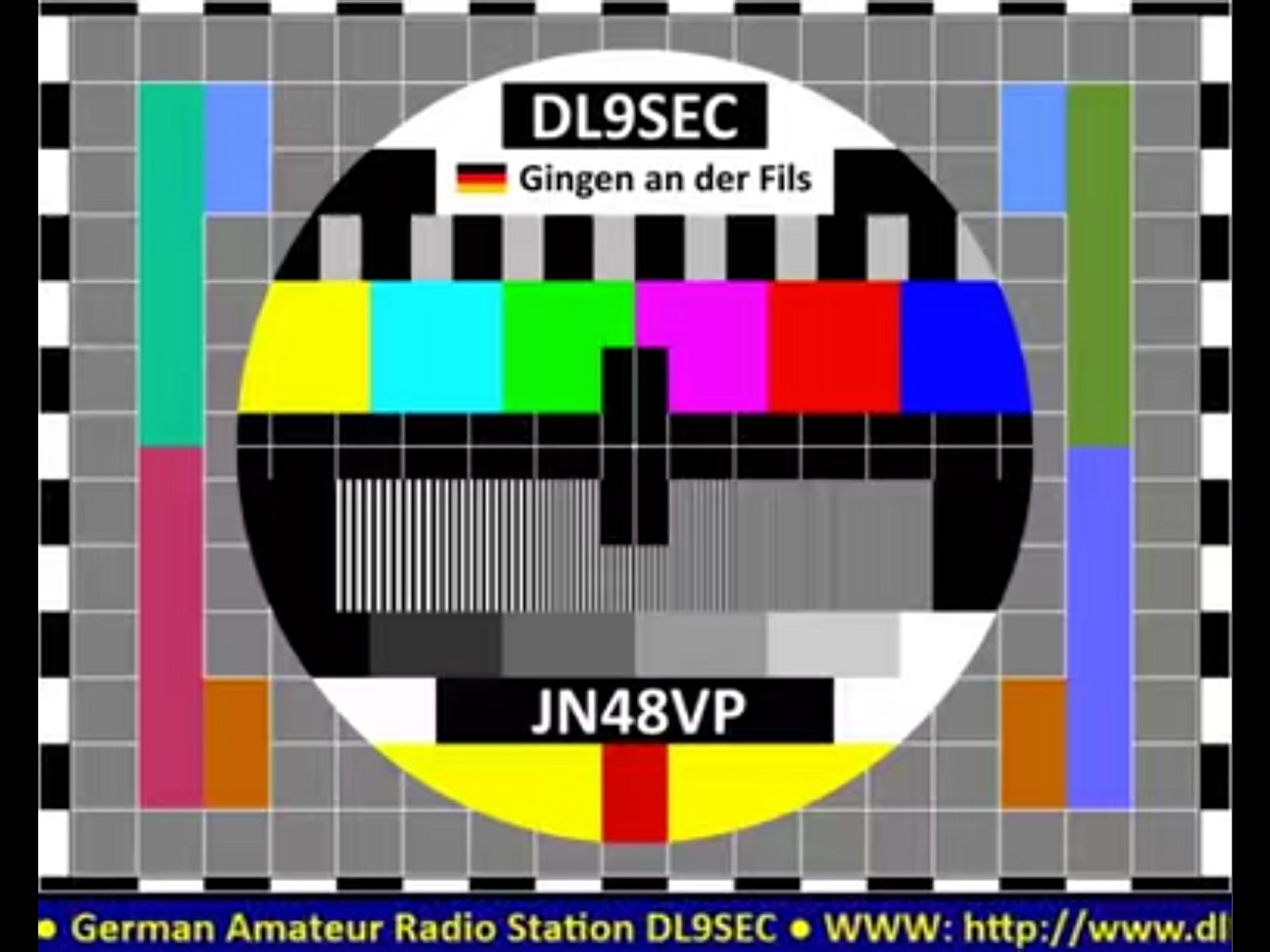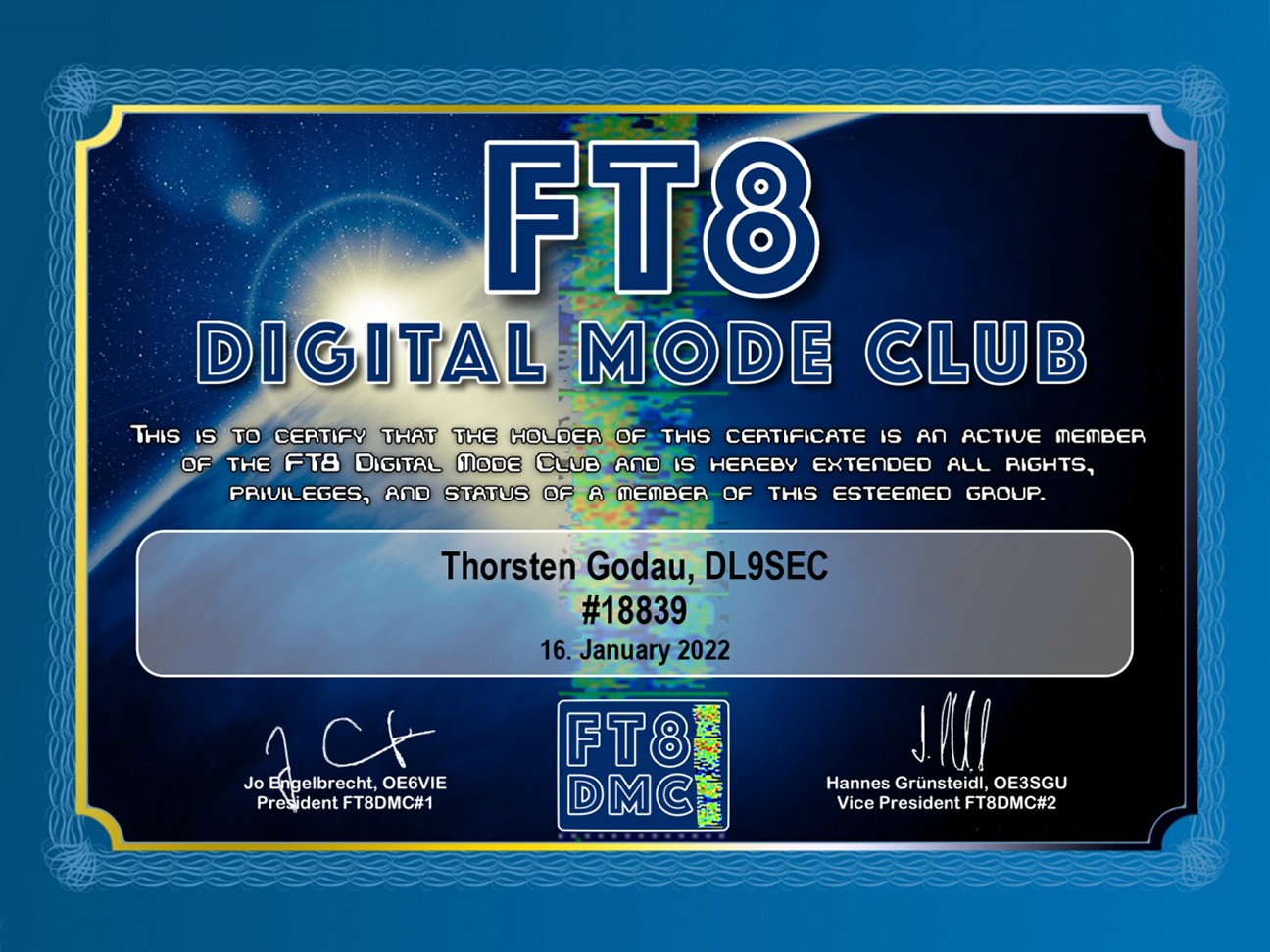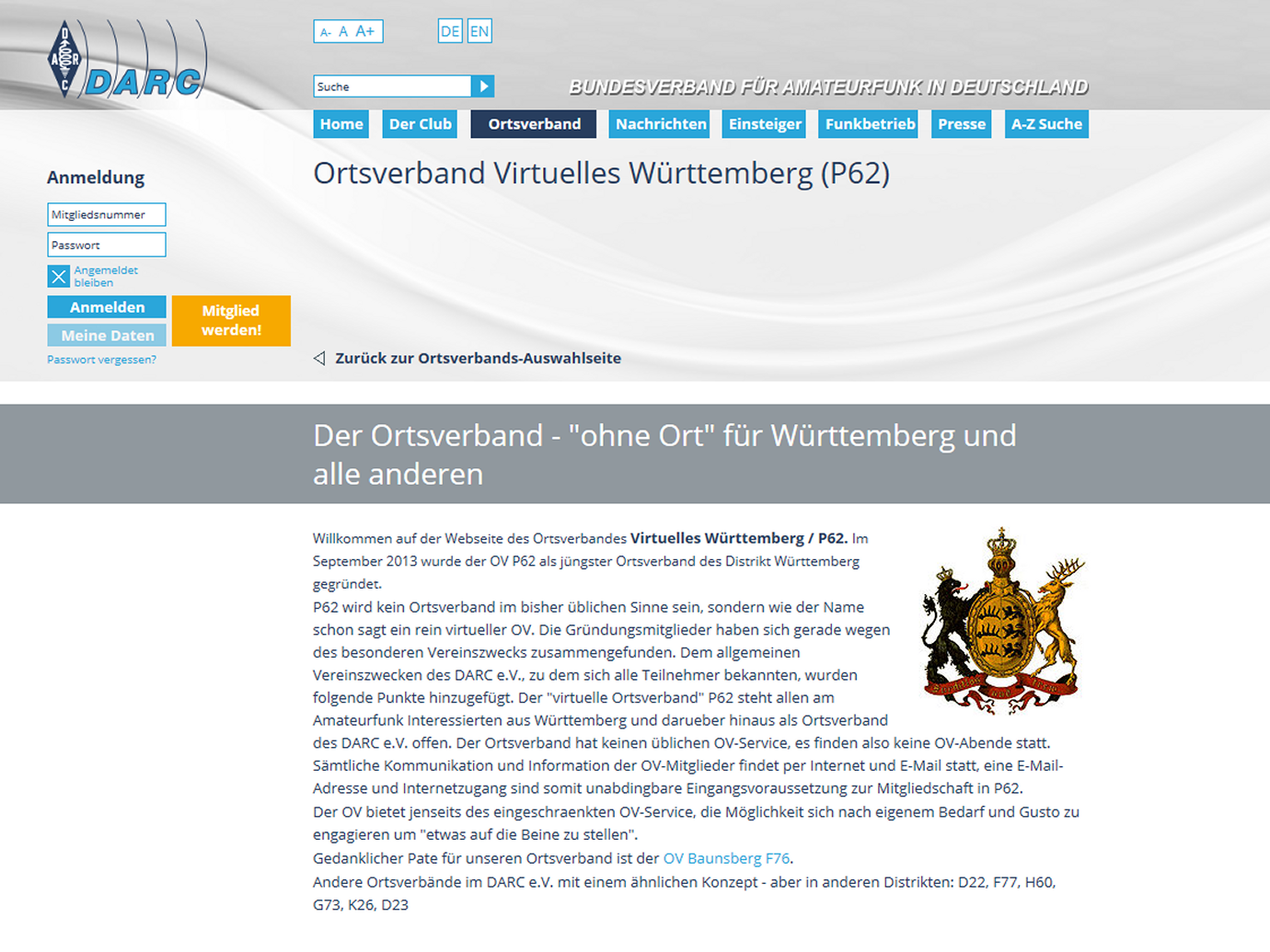DL9SEC
German Amateur Radio StationJN48VP • DOK P62
Amateur Radio
General
Since April 1989 I'm a licensed ham. I started with a novice license (former german class C) and the callsign DG5SCQ. About two years later, I passed the test for the today's CEPT T/R 61-01 license (german class A) and got the callsign DL9SEC.
In the first years as a ham I worked a lot of stations mainly on 2m, 10m, 15m, 20m most of them in SSB and CW with the equipment of my father, silent key DK5SJ.
Since end of June 2017 I also own the amateur radio training callsign DN5GO.
I did a lot of homebrewing (antennas, receiver, transceiver..) over the years, some failed, the most working successful.
I am a (founding) member of the german DARC chapter "Virtuelles Württemberg" P62 (a "virtual" chapter with no explicit location, no local services and with members from all over Germany) within the DARC district of "Württemberg" P.
Digital Radio
In early 2018 I started experimenting with digital voice amateur radio and registered for D-STAR and DMR and got the DMR/CCS7-IDs 2637163 and 2637303. I extended my good old Hamradio Siemens C5 (http://www.digisolutions.de/c5umbau/overview.html) with the DO1FJN C5 DV-modem (http://www.digisolutions.de/opendv/overview.html) with an AMBE2000 codec for D-STAR. To start with DMR I built a DVMEGA (http://www.dvmega.auria.nl/index.html) multimode AMBE3000 based myDV adapter for D-STAR and DMR to be able to do these digital voice modes with my YAESU rig too (unfortunately there is currently no working D-STAR/DMR firmware available for the DVMEGA with AMBE and GMSK modem. So I used the DV adapter connected to my PC in combination with BlueDV connecting the RF network directly through the internet).
Later I replaced the myDV adapter with a DVMEGA-Cast (http://www.dvmega.auria.nl/DVMEGACast.html), a DV network transceiver for D-STAR/DMR/Fusion based on pi-star and DVMEGA. Additionaly I use my cellphone together with AMBEserver and a DVstick 30 (http://dvmega.auria.nl/DVstick.html) which works also directly connected through an OTG adapter at my cellphone and the BlueDV AMBE app by PA7LIM as a D-STAR/DMR radio replacement (not a real ham rig, but an easy and relatively cheap access to D-STAR and DMR, especially if there is no RF node around).
To start with "real" over-the-air DMR I bought a really cheap and simple Radioddity RD-5R Tier II DMR handheld, sold as the brand BAOFENG. I programmed a RD-5R codeplug (for the original CPS) and an OpenGD77 codeplug for DMRplus (http://www.dmrplus.de) and BrandMeister for german repeaters.
The usability of the RD-5R with the stock firmware is really crude. I searched for an alternative firmware and found the OpenGD77 project. For experimental purpose I purchased another Radioddity GD-77 Tier II DMR handheld and adapted my RD-5R codeplug for the OpenGD77 CPS (the OpenGD77 CPS compatible codeplug with extension g77 is included in the RD-5R codeplug package above).
QO-100
In August 2019 I started to plan and build a communication system for QO-100 (Es'hail2), step by step beginning with the receive path in several iterations and then building up the transmit path. At first for communication on the narrowband transponder, later for DATV communication on the wideband transponder.
I started with a BaMaTech DuoBand-Feed with dielectric lens (TX: linear polarized patch, RX: LNB LSP-02G), modified the LSP-02G with a TCXO (see pdf) and made some first succesful reception tests with a 40cm camping dish.
After calculating azimuth (23,7°), elevation (32,5°), multifeed tilt (-11°) and LNB positions (Astra: -4,5°/QO-100: +2,2°), the QO-100 feed was mounted at my Kathrein CAS80 TV dish (73cm) with a ZAS90 multifeed mounting plate. The reception of both satellites works very well with enough level reserve.
For reception of the narrowband transponder I use a RTL-SDR server (Nooelec 0.5ppm NESDR at an Armbian driven Bananapi M1 which runs rtl_tcp as a daemon) together with the very popular and powerful SDR-Console by Simon Brown (G4ELI).
At first connected directly to the LNB via a bias-tee, the RTL-SDR was later connected to the OCXO version of the AMSAT-DL QO-100 DownConverter V3d. I did another external reference modification of the LSP-02G (see pdf) to feed the LNB with a highly stable 25MHz reference clock directly from the DownConverter.
At this time I switched from the BaMaTech feed to a TX LHCP POTY (http://www.hybridpretender.nl/poty.html) feed (which gains about 3dB at transmitting) with a Venton EXL-T dielectric lens and a Golden Media GM-201 LNB which gains about 8..10dB S/N compared to the LSP-02G. Apart from the TX polarization gain, the POTY offers more flexibility at the LNB choice.
Equipped with some self-designed 3D-printed ABS parts (patch cover, waveguide and clamp adapter) the BaMaTech was replaced by the POTY.
After optimizing the reception path, decoding of the QO-100 WB beacon and other DATV transmissions were possible with the software decoder DVB-S GUI (http://v.1337team.tk/dvb-s_gui_amsat.zip) by markro92. Because of that, I decided to buy a MinitiounerPro 2 tuner by the R.E.F. to receive the transmissions at the WB transponder with the popular software Minitioune by Jean-Pierre Courjaud (F6DZP).
DownConverter and its OLED display, tuner and its TFT display, NW/WB RF switch, a 24V/4.5A power supply, a 12V/1A DC/DC converter, an isolated TX switch and a voltage/current meter were installed into a compact metal housing.
After finishing the reception path I built up the transmit path. I use my good old Yaesu FT-817 as a driving transmitter. SDR-Console and the FT-817 are coupled via OmniRig (http://dxatlas.com/omnirig) to set the VHF TX frequency at the FT-817 depending on the RX frequency selected in the SDR-Console spectrum display. Primarily I want to use my FT-991 as the receiver in a PC-less configuration, but there is no easy solution to sync the RX/TX frequency without additional efforts in the CAT interfacing. The PC solution has the advantage to see the whole NB transponder spectrum at a glance. One can react very fast to e.g. SSTV or SSB transmissions.
As an UpConverter from 432MHz to 2400MHz the low-cost DXPATROL MK2 by Antonio Matias (CT1FFU) seems to be a good solution for me. The output level of about 100mW fits perfect to the modular 30W (P1dB) PA by Kurt Moraw (DJ0ABR). A linear peak power of about 20..25W into my CAS80 dish are more than enough for NB communications.
Both components are mounted into a stainless steel, wall mounted cabinet behind the dish to minimize cable loss ans save precious power at 2400MHz.
Last but not least I wanted to know, if my rig was good enough to do DATV via the WB transponder. I was aware, that my output power and my dish size aren't enough to reach a decodable MER with symbol rates higher than 125kbit/s.
I used an ADALM-PLUTO by Analog Devices together with an adapted custom firmware for QO-100 DATV (http://firmware.hackhamradio.com) by Evariste Courjaud (F5OEO) and played around with OBS Studio to create some scenes with test pattern, images and live cam video and a suitable data stream for the ADALM-PLUTO to be modulated and sent to QO-100.
Actually I was able to decode my transmission from QO-100 with a sufficient MER! After experimenting with H.264 encoding and some parameters, I found a way to encode my data stream on-the-fly in H.265 by software with FFMPEG which results in a higher stream quality at the same symbol rate.
Rig
My antennas: Tarheel Model 300A (160m..10m) + CA-35RS lightning protector, Yaesu ATAS-120A with a modified whip (130cm) for short wave (40m..10m, currently unused), Nagoya MAG-70EL-W for VHF/UHF (2m..70cm), Sirio SD 3000N broadband discone (300MHz..3000MHz) for reception experiments (and a lot of experimental and portable antennas from MHz to GHz).
For experiments with satellite communications I have built a classic VHF-Turnstile (crossed dipoles) and a modified UHF-"OE1CGS Easy Turnstile" antenna (conjugated complex angled dipoles, hidden cable feed), both RHCP. The antennas are mounted on a Al-pipe and seems to work very well.
My radio equipment: Yaseu FT-991A (100W/50W all band TRX), Yaesu FT-817 (5W mobile/portable all band TRX), Yaesu VX1-R (0.5W 2m/70cm portable TRX), Kenwood TH-78E (5W 2m/70cm portable TRX), C5DV (15W 70cm portable FM/D-STAR TRX), BAOFENG RD-5R (5W 2m/70cm portable FM/DMR Tier II TRX), Radioddity GD-77 (5W 2m/70cm portable FM/DMR Tier II TRX), LDG RT/RC-100 Remote Antenna Tuner (currently unused), MFJ-931 Artificial Ground, Emtech/QRPproject ZM-2 and ZM-4 QRP Z-Match antenna tuner (and a lot of other experimental radio stuff).
QSLs
I really like to show my son cards and pictures from foreign and far away countries all over the world (seems to be a bit old fashioned, but we have a lot of fun with that). I prefer paper cards via bureau or direct (see QRZ.com for details), but I also use eQSL.cc for QSO confirmation.
© 2017-2022 Thorsten Godau DL9SEC • Powered by ALL-INKL.COM • Favicon by Icons8
© 2016 Static Flat Ui kit. All rights reserved | Design by W3layouts

